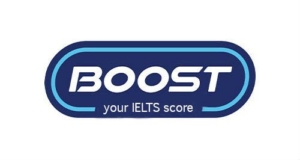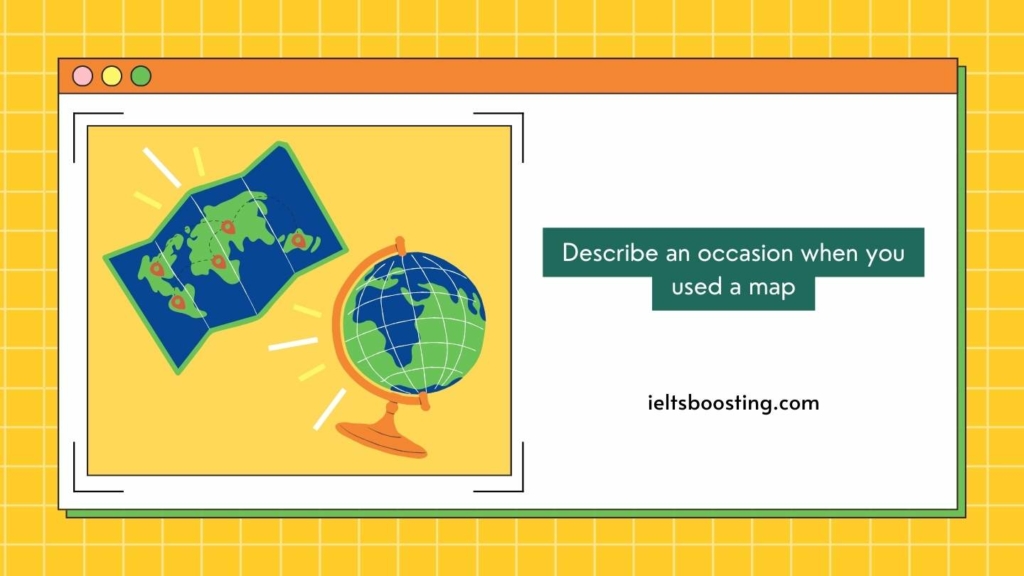Describe an occasion when you used a map
You should say:
When you used the map
Where you were
Why you used a paper map
And explain how you felt about the experience
Sample answer to describe an occasion when you used a map
Ten years ago, I embarked on a road trip with a group of friends to explore the beautiful countryside around Nha Trang city by bike from HCMC. We decided to visit a remote national park that none of us had been to before.
As none of us had smartphones and were unfamiliar with the area, we relied on a good old-fashioned paper map to navigate our way. It was an amusing sight – a bunch of tech-savvy millennials trying to decipher a map – but it added a sense of adventure to the trip.
The occasion that stands out the most is when we reached a crossroads with multiple confusing signs. We gathered around the map, arguing and laughing as we tried to figure out the correct route. It turned into a memorable moment, filled with both excitement and a bit of confusion.
Eventually, after some trial and error, we successfully reached our destination. Looking back, using that map added an extra layer of enjoyment to our journey, making it more interactive and fun. It’s funny how something as simple as a map can turn a regular road trip into a great story to share.
Có thể gom chung với đề describe a place in your country that you are interested in
Forecast speaking from 1-4 2024

Describe an occasion when you used a map
Part 3-occasion when you used a map
What do people usually do when they get lost?
When people find themselves lost, they often resort to checking their smartphones or GPS for directions. If technology fails, asking for help from locals or retracing steps to a familiar location are common strategies. Some may use natural landmarks or maps for orientation. It’s a mix of instincts, social interactions, and navigation skills that come into play in such situations.
Useful Vocabulary:
- Resort to: Turn to as a solution or strategy.
- Orientation: The determination of one’s position in relation to the surroundings.
- Instincts: Natural or intuitive behavior.
- Retrace: To go back along the same route.
- Landmarks: Prominent features used for navigation.
- Navigate: Find one’s way.
- Strategy: A plan or method for achieving a particular goal.
What are the differences between paper and digital maps?
Paper maps provide a panoramic view of a certain place, offering a sense of adventure and independence. They don’t require a power source and can serve as a backup in case of no battery or no internet. Conversely, digital maps are highly convenient, offering real-time updates, precise navigation, and interactive features. They’re more adaptable, allowing users to switch between views, and often include additional information such as reviews or live traffic data.
Useful Vocabulary:
- Panoramic view: A wide and comprehensive view of an area.
- Sense of adventure: A feeling of excitement or thrill associated with exploration.
- Independence: The state of being self-reliant and autonomous.
- Backup: A reserve or alternative that can be used in case of need.
- Convenient: Making tasks easy or trouble-free.
- Real-time updates: Information that is provided immediately as it happens.
- Precise navigation: Accurate and detailed guidance in terms of direction.
- Interactive features: Elements that allow users to engage and interact with the map.
- Adaptable: Capable of adjusting or changing according to different conditions.
- Switch between views: The ability to change the display or perspective on the map.
- Additional information: Extra details or data that supplements the main content.
- Reviews: Evaluations or opinions shared by users about places or services.
- Live traffic data: Real-time information about current traffic conditions.
What do you think of in-car GPS navigation systems?
In-car GPS navigation systems are incredibly handy for modern drivers. They provide real-time directions, making it easier to navigate unfamiliar roads and cities. The voice-guided feature enhances safety by allowing drivers to keep their eyes on the road. The convenience and accuracy of these systems have significantly reduced reliance on traditional maps, offering a seamless and efficient driving experience.
Useful Vocabulary:
- Handy: Convenient and useful.
- Unfamiliar: Not known or recognized.
- Voice-guided: Providing directions through spoken instructions.
- Seamless: Smooth and continuous, without interruption or difficulty.
- Efficient: Achieving maximum productivity with minimum wasted effort or expense.
What do people often do with a map?
Maps, whether in paper or digital form, are primarily utilized for navigating unfamiliar places, planning travel routes, and locating points of interest. Moreover, maps serve as a crucial tool for understanding the layout of a city or region, facilitating individuals in exploring and discovering new areas. In contemporary times, maps are also employed for advertising products by companies, and individuals use them to express concerns or provide feedback about products and services.
Useful Vocabulary:
- Primarily: Mainly or chiefly.
- Utilized: Used or employed for a particular purpose.
- Navigating: Finding one’s way, especially in unfamiliar places.
- Locating: Determining the position or whereabouts of something.
- Crucial: Extremely important or essential.
- Facilitating: Making a process or task easier.
- Contemporary times: The present era or current period.
- Employed: Used or utilized for a specific function.
- Advertising: Promoting or publicizing products or services.
- Express concerns: Communicate worries or issues.
- Provide feedback: Share opinions or comments about something.
- Layout: The arrangement or plan of something.
- Exploring: Traveling in or through an unfamiliar area to learn about it.
- Discovering: Finding or learning about something for the first time.
How does learning to read a map help you learn more about your country?
Learning to read a map enhances one’s geographical awareness and deepens their understanding of the country’s topography. It allows individuals to grasp the diverse landscapes, identify key landmarks, and comprehend the spatial relationships between different regions. Moreover, map reading fosters a sense of connection with one’s country by revealing historical and cultural nuances embedded in the geographical layout. Overall, this skill transforms a mere surface knowledge of the nation into a richer, more profound comprehension.
Useful Vocabulary:
- Topography: The arrangement of physical features in an area (địa hình học)
- Grasp: Understand or comprehend.
- Spatial relationships: The connections and positions between different places or objects.
- Nuances: Subtle differences or distinctions.
- Profound: Having deep meaning or significance.


